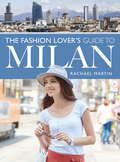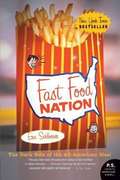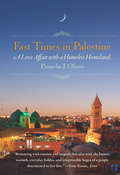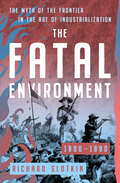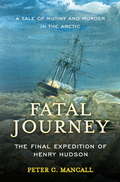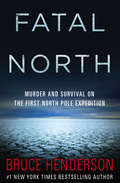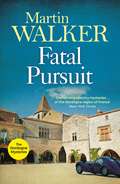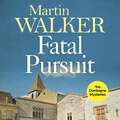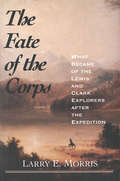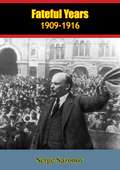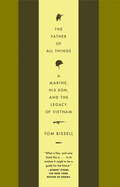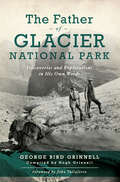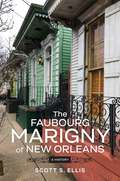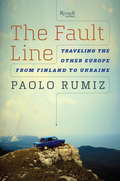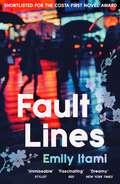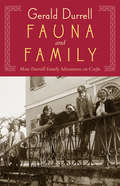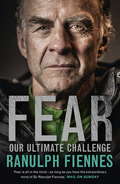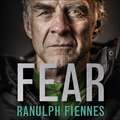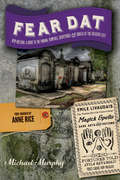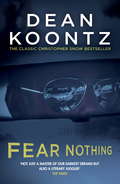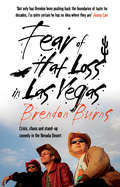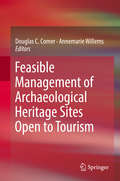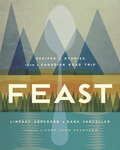- Table View
- List View
The Fashion Lover's Guide to Milan (City Guides)
by Rachael MartinMilan is the European fashion capital with one of the world’s most unique luxury fashion districts where the leaders of some of the most exclusive fashion houses are still living and working today. It’s the Italian city whose skyline has changed more than any, and whose fashion industry has extended to encompass the worlds of design, restaurants, bars, exhibition spaces, hotels and more. Whether you’re looking for designer labels within the city’s luxury fashion district, prefer to browse the city’s boutiques or pick up some quality vintage at the city’s vintage shops and markets, this is the guide that will tell you where to go. Split into geographical sections along with relevant maps, cultural highlights and suggestions for where to eat and drink, it places Milan as the city of fashion within the context of Italian fashion history and a city, and brings the stories of its people to life. Why did Milan become Italy’s fashion capital? And what does it offer the fashion lover as a city today?
The Fashion Lover's Guide to Milan (City Guides)
by Rachael MartinMilan is the European fashion capital with one of the world’s most unique luxury fashion districts where the leaders of some of the most exclusive fashion houses are still living and working today. It’s the Italian city whose skyline has changed more than any, and whose fashion industry has extended to encompass the worlds of design, restaurants, bars, exhibition spaces, hotels and more. Whether you’re looking for designer labels within the city’s luxury fashion district, prefer to browse the city’s boutiques or pick up some quality vintage at the city’s vintage shops and markets, this is the guide that will tell you where to go. Split into geographical sections along with relevant maps, cultural highlights and suggestions for where to eat and drink, it places Milan as the city of fashion within the context of Italian fashion history and a city, and brings the stories of its people to life. Why did Milan become Italy’s fashion capital? And what does it offer the fashion lover as a city today?
Fast Food Nation: The Dark Side of the All-American Meal
by Eric SchlosserUsing first-rate reporting, wry wit and careful reasoning, Schlosser shows how fast food has harmed the American culture.
Fast Times in Palestine: A Love Affair with a Homeless Homeland
by Pamela J. OlsonFor much of her life--like many Westerners--most of what Pamela Olson knew of the Middle East was informed by headlines and stereotypes. But when she traveled to Palestine in 2003, she found herself thrown with dizzying speed into the realities of Palestinian life.Fast Times in Palestine is Olson's powerful, deeply moving account of life in Palestine--both the daily events that are universal to us all (house parties, concerts, barbecues, and weddings) as well as the violence, trauma, and political tensions that are particular to the country. From idyllic olive groves to Palestinian beer gardens, from Passover in Tel Aviv to Ramadan in a Hamas village, readers will find Olson's narrative both suspenseful and discerning. Her irresistible story offers a multi-faceted understanding of the Palestinian perspective on the Israel-Palestine conflict, filling a gap in the West's understanding of the difficult relationship between the two nations.At turns funny, shocking, and galvanizing, Fast Times in Palestine is a gripping narrative that challenges our ways of thinking--not only about the Middle East, but about human nature, cultural identity, and our place in the world.
The Fatal Environment: The Myth of the Frontier in the Age of Industrialization, 1800–1890 (Mythology of the American West)
by Richard SlotkinA two-time National Book Award finalist&’s &“ambitious and provocative&” look at Custer&’s Last Stand, capitalism, and the rise of the cowboys-and-Indians legend (The New York Review of Books). In The Fatal Environment, historian Richard Slotkin demonstrates how the myth of frontier expansion and subjugation of Native Americans helped justify the course of America&’s rise to wealth and power. Using Custer&’s Last Stand as a metaphor for what Americans feared might happen if the frontier should be closed and the &“savage&” element be permitted to dominate the &“civilized,&” Slotkin shows the emergence by 1890 of a mythos redefined to help Americans respond to the confusion and strife of industrialization and imperial expansion. &“A clearly written, challenging and provocative work that should prove enormously valuable to serious students of American history.&” —The New York Times &“[An] arresting hypothesis.&” —Henry Nash Smith, American Historical Review
Fatal Journey: The Final Expedition of Henry Hudson
by Peter MancallThe English explorer Henry Hudson devoted his life to the search for a water route through America, becoming the first European to navigate the Hudson River in the process. In Fatal Journey, acclaimed historian and biographer Peter C. Mancall narrates Hudson’s final expedition. In the winter of 1610, after navigating dangerous fields of icebergs near the northern tip of Labrador, Hudson’s small ship became trapped in winter ice. Provisions grew scarce and tensions mounted amongst the crew. Within months, the men mutinied, forcing Hudson, his teenage son, and seven other men into a skiff, which they left floating in the Hudson Bay. A story of exploration, desperation, and icebound tragedy, Fatal Journey vividly chronicles the undoing of the great explorer, not by an angry ocean, but at the hands of his own men.
Fatal North: Murder and Survival on the First North Pole Expedition
by Bruce HendersonThe #1 New York Times bestselling author reveals &“the chilling story&” of disaster and suspected murder on the19th century Polaris expedition (Vincent Bugliosi, author of Helter Skelter)Sponsored by the United States government, the Polaris expedition of 1871 was intended to be the first to reach the North Pole. By its end, the ship was sunk, Captain Charles Hall was dead under suspicious circumstances, and thirty-three men, women, and children were struggling to survive while stranded on the polar ice for six months.News of the disastrous expedition and accusations of murder lead to a national scandal, an official investigation, and a government cover-up. The true cause of the captain&’s death remained unknown for nearly 100 years, until Charles Hall&’s grave was found by a search party and opened.#1 New York Times bestselling author Bruce Henderson combines the transcripts of the U.S. Navy&’s original inquest, the personal papers of Captain Hall, as well as his autopsy and forensic reports relating to his death, the ship&’s log, and personal journals of the crew to tell the complete story of this mysterious tragedy.&“Rewardingly suspenseful…Rousing sea adventure.&” —Seattle Weekly&“A factual historical mystery written by a gifted storyteller.&” —Library Journal&“The story is nothing short of incredible.&” —Baton Rouge Advocate
Fatal Pursuit: Bruno chases the most beautiful car ever made, one that some would kill for (The Dordogne Mysteries #9)
by Martin Walker'RICH IN ATMOSPHERE AND PERSONALTIY ... IT'S IMPOSSIBLE TO READ A BRUNO NOVEL WITHOUT GETTING HUNGRY' New York TimesBruno, Chief of Police, star of the internationally bestselling series of Dordogne Mysteries, investigates the real-life disappearance of 'the most beautiful car ever made' in this compelling case for France's favourite copThe Bugatti Type 57 Atlantic was called the most beautiful car of all time. Only four of them were ever built. A California museum paid $37 million for one; Ralph Lauren bought another; a third was smashed by a train at a level crossing. The fourth disappeared in France during World War 2. It was the car used by British racing ace, William Grover Williams, twice winner of the French and Monaco Grand Prix, who became an undercover agent in Occupied France.The latest adventure in the Bruno series of mystery novels starts from this true story. Two young men, both racing drivers with a passion for antique cars, compete to find new clues as to the car's hiding place in the Perigord region of France. When a local researcher turns up dead on Bruno's patch, and French intelligence starts investigating the use of classic car sales to launder money for funding Islamic terrorism, Bruno finds himself once more caught up in a case that reaches far beyond his small town and its people.With the bucolic charm and gourmet cooking that are the hallmarks of this series, Bruno's latest adventure finds him falling in love again as he races to find the murderer and to track down the fate of the most beautiful car ever made.
Fatal Pursuit: The Dordogne Mysteries 9 (The Dordogne Mysteries #9)
by Martin Walker'RICH IN ATMOSPHERE AND PERSONALTIY ... IT'S IMPOSSIBLE TO READ A BRUNO NOVEL WITHOUT GETTING HUNGRY' New York Times Bruno, Chief of Police, star of the internationally bestselling series of Dordogne Mysteries, investigates the real-life disappearance of 'the most beautiful car ever made' in this compelling case for France's favourite cop The Bugatti Type 57 Atlantic was called the most beautiful car of all time. Only four of them were ever built. A California museum paid $37 million for one; Ralph Lauren bought another; a third was smashed by a train at a level crossing. The fourth disappeared in France during World War 2. It was the car used by British racing ace, William Grover Williams, twice winner of the French and Monaco Grand Prix, who became an undercover agent in Occupied France. The latest adventure in the Bruno series of mystery novels starts from this true story. Two young men, both racing drivers with a passion for antique cars, compete to find new clues as to the car's hiding place in the Perigord region of France. When a local researcher turns up dead on Bruno's patch, and French intelligence starts investigating the use of classic car sales to launder money for funding Islamic terrorism, Bruno finds himself once more caught up in a case that reaches far beyond his small town and its people. With the bucolic charm and gourmet cooking that are the hallmarks of this series, Bruno's latest adventure finds him falling in love again as he races to find the murderer and to track down the fate of the most beautiful car ever made.(P)2016 WF Howes Ltd
The Fate of the Corps: What Became of the Lewis and Clark Explorers After the Expedition
by Larry E. Morris&“Combines adventure, mystery, and tragedy . . . a &‘Who&’s Who&’ of explorers who opened the pathway for an ocean-to-ocean America.&” —St. Joseph News-Press (Missouri) The story of the Lewis and Clark Expedition has been told many times. But what became of the thirty-three members of the Corps of Discovery once the expedition was over? The expedition ended in 1806, and the final member of the corps passed away in 1870. In the intervening decades, members of the corps witnessed the momentous events of the nation they helped to form—from the War of 1812 to the Civil War and the opening of the transcontinental railroad. Some of the expedition members went on to hold public office; two were charged with murder. Many of the explorers could not resist the call of the wild and continued to adventure forth into America&’s western frontier. Engagingly written and based on exhaustive research, The Fate of the Corps chronicles the lives of the fascinating men (and one woman) who opened the American West. &“A fascinating afterword to the expedition . . . demands inclusion in the canon of essential Lewis and Clark books.&”—Seattle Post-Intelligencer &“Succinct, clear style . . . The diverse fates of the members of the expedition . . . give the feel of a Greek epic.&”—Santa Fe New Mexican
Fateful Years, 1909-1916: 1914)
by Serge SazonovTHE catastrophe which overwhelmed Europe in July, 1914, the effects of which made themselves felt more or less over the whole world, cannot yet be made the subject of scientific historical investigation. So immense a task is beyond the powers of those who witnessed and still more of those who were directly concerned in it. It must be left to the rising generation, in the hope that their remoteness from these events will ensure for their labours the necessary freedom from prejudice and that they will have access to historical material more complete than that already available, important as that is.Those who read these short recollections must not expect to I find in them a consecutive and full exposition of the course of the historic events of which I was a witness, or in which I participated, but only my personal estimate of them in the light of the information which I possessed. They will find these occurrences set out objectively in the official compilations of diplomatic documents published, both at the beginning of the European War and later by the Governments of the belligerent Powers, and also in the endless literature published in every language during recent years, and referring, not only to the actual war period, but also to the period that preceded it.
The Father of All Things
by Tom BissellThe Father of All Things is a riveting, haunting, and often hilarious account of a veteran and his son's journey through Vietnam. As his father recounts his experiences as a soldier, including a near fatal injury, Tom Bissell weaves a larger history of the war and explores the controversies that still spark furious debate today. Blending history, memoir, and travelogue,The Father of All Things is a portrait of the war's personal, political, and cultural impact from the perspective of the generation that grew up in the wake of the conflict. It is also a wise and revelatory book about the bond between fathers and sons.
The Father of Glacier National Park: Discoveries and Explorations in His Own Words
by George Bird GrinellThe story of this glorious Montana landmark, told through the journals and letters of the man who fought to conserve it—maps and photos included. With his small group of explorers, George Bird Grinnell discovered and named forty geological features east of the Continental Divide and west of the Blackfeet Reservation. He also happened to be a prolific writer and record-keeper who diligently made time in camp for meticulous journal entries. As a result, he wrote a series of articles about his trips from 1885 to 1898 for publication in Forest and Stream. In 1891, he began advocating to protect the area as a national park—and led that charge for nearly two decades until successful. His discoveries, publications, and leadership led to the creation of Glacier National Park. In this book, his cousin Hugh Grinnell compiles first-person narratives from unpublished journal entries, personal correspondence, and dozens of articles to tell the early story of Glacier.
The Faubourg Marigny of New Orleans: A History
by Scott S. EllisLeaving the crowded, tourist-driven French Quarter by crossing Esplanade Avenue, visitors and residents entering the Faubourg Marigny travel through rows of vibrantly colored Greek revival and Creole-style homes. For decades, this stunning architectural display marked an entry into a more authentic New Orleans. In the first complete history of this celebrated neighborhood, Scott S. Ellis chronicles the incomparable vitality of life in the Marigny, describes its architectural and social evolution across two centuries, and shows how many of New Orleans’s most dramatic events unfolded in this eclectic suburb.Founded in 1805, the Faubourg Marigny benefited from waves of refugees and immigrants settling on its borders. Émigrés from Saint-Domingue, Germany, Ireland, and Italy, in addition to a large community of the city’s antebellum free people of color, would come to call Marigny home and contribute to its rich legacy. Shaped as well by epidemics and political upheaval, the young enclave hosted a post–Civil War influx of newly freed slaves seeking affordable housing and suffered grievous losses after deadly outbreaks of yellow fever. In the twentieth century, the district grew into a working-class neighborhood of creolized residents that eventually gave way to a burgeoning gay community, which, in turn, led to an era of “supergentrification” following Hurricane Katrina. Now, as with many historic communities in the heart of a growing metropolis, tensions between tradition and revitalization, informality and regulation, diversity and limited access contour the Marigny into an ever more kaleidoscopic picture of both past and present.Equally informative and entertaining, this nuanced history reinforces the cultural value of the Marigny and the importance of preserving this alluring neighborhood.
The Fault Line
by Paolo Rumiz Gregory ContiAn award-winning writer travels the eastern front of Europe, where the push/pull between old empires and new possibilities has never been more evident. Paolo Rumiz traces the path that has twice cut Europe in two--first by the Iron Curtain and then by the artificial scaffolding of the EU--moving through vibrant cities and abandoned villages, some places still gloomy under the ghost of these imposing borders, some that have sought to erase all memory of it and jump with both feet into the West (if only the West would have them). In The Fault Line, he is a sublime and lively guide through these unfamiliar landscapes, piecing together an atlas that has been erased by modern states, delighting in the discovery of communities that were once engulfed by geopolitics then all but forgotten, until now.The farther south he goes, the more he feels he is traveling not along some abandoned Eastern frontier, but right in the middle of things: Mitteleuropa wasn't to be found in Viennese cafés but much farther east, beyond even Budapest and Warsaw. As in Ukraine, these remain places in flux, where the political and cultural values of the East and West have stared each other down for centuries. Rumiz gives a human face not just to what the Cold War left behind but to the ancient ties of empire and ethnicity that are still at the root of modern politics in flash-point areas such as this.
Fault Lines: Shortlisted for the 2021 Costa First Novel Award
by Emily Itami'The perfect marriage of Sally Rooney and early Murakami' Kathy Wang, author of Impostor SyndromeMizuki is a Japanese housewife. She has a hardworking husband, two adorable children and a beautiful Tokyo apartment. It's everything a woman like her could want . . . isn't it?One rainy night, she meets Kiyoshi. In him, she rediscovers freedom, friendship, a voice, and the neon, electric pulse of the city she has always loved. But the further she falls into their relationship, the clearer it becomes that she is living two lives - and in the end, we can choose only one.'A brilliant modern love story . . . atmospheric and transporting but also wise, clever and universal in its exploration of love, family and identity. I loved it' Cathy Rentzenbrink
Fauna and Family: More Durrell Family Adventures on Corfu
by Gerald DurrellThe inspiration for the PBS Masterpiece series, The Durrells in Corfu: A naturalist&’s childhood adventures with animals—and humans—on a Greek island. For a passionate animal lover like young Gerald Durrell, the island in the Ionian Sea was a natural paradise, teeming with strange birds and beasts. As he writes . . . &“To me, this blue kingdom was a treasure house of strange beasts which I longed to collect and observe, and at first it was frustrating for I could only peck along the shoreline like some forlorn seabird, capturing the small fry in the shallows and occasionally being tantalized by something mysterious and wonderful cast up on the shore. But then I got my boat, the good ship Bootle Bumtrinket, and so the whole of this kingdom was opened up for me, from the golden red castles of rock and their deep pools and underwater caves in the north to the long, glittering white sand dunes lying like snowdrifts in the south.&” The final entry in Durrell&’s Corfu Trilogy, Fauna and Family shows what life was like for a child in a different time and a different culture just before World War II. It also sheds light on the man who would one day become an iconic wildlife preservationist.Previously published as The Garden of the Gods&“[Durrell's] writing is nimble, witty and irreverent, warm but not remotely sentimental.&” —Los Angeles Times
Fear: Our Ultimate Challenge
by Ranulph FiennesExplorer and adventurer Sir Ranulph Fiennes explores the concept of fear, and shows us through his own experiences how we can push our boundaries in everyday life.Sir Ranulph Fiennes has climbed the Eiger and Mount Everest. He's crossed both Poles on foot. He's been a member of the SAS and fought a bloody guerrilla war in Oman. And yet he confesses that his fear of heights is so great that he'd rather send his wife up a ladder to clean the gutters than do it himself.In FEAR, the world's greatest explorer delves into his own experiences to try and explain what fear is, how it happens and how he's overcome it so successfully. He examines key moments from history where fear played an important part in the outcome of a great event. He shows us how the brain perceives fear, how that manifests itself in us, and how we can transform our perceptions.With an enthralling combination of story-telling, research and personal accounts of his own struggles to overcome fear, Sir Ranulph Fiennes sheds new light on one of humanity's strongest emotions.
Fear: Our Ultimate Challenge
by Ranulph FiennesExplorer and adventurer Sir Ranulph Fiennes explores the concept of fear, and shows us through his own experiences how we can push our boundaries in everyday life.Sir Ranulph Fiennes has climbed the Eiger and Mount Everest. He's crossed both Poles on foot. He's been a member of the SAS and fought a bloody guerrilla war in Oman. And yet he confesses that his fear of heights is so great that he'd rather send his wife up a ladder to clean the gutters than do it himself.In FEAR, the world's greatest explorer delves into his own experiences to try and explain what fear is, how it happens and how he's overcome it so successfully. He examines key moments from history where fear played an important part in the outcome of a great event. He shows us how the brain perceives fear, how that manifests itself in us, and how we can transform our perceptions.With an enthralling combination of story-telling, research and personal accounts of his own struggles to overcome fear, Sir Ranulph Fiennes sheds new light on one of humanity's strongest emotions.
Fear: Our Ultimate Challenge
by Ranulph FiennesSir Ranulph Fiennes has climbed the Eiger and Mount Everest. He's crossed both Poles on foot. He's been a member of the SAS and fought a bloody guerrilla war in Oman. And yet he confesses that his fear of heights is so great that he'd rather send his wife up a ladder to clean the gutters than do it himself. <p><p>In Fear, the world's greatest explorer delves into his own experiences to try and explain what fear is, how it happens and how he's overcome it so successfully. He examines key moments from history where fear played an important part in the outcome of a great event. He shows us how the brain perceives fear, how that manifests itself in us, and how we can transform our perceptions. <p><p>With an enthralling combination of story-telling, research and personal accounts of his own struggles to overcome fear, Sir Ranulph Fiennes sheds new light on one of humanity's strongest emotions.
Fear Dat New Orleans: A Guide To The Voodoo, Vampires, Graveyards And Ghosts Of The Crescent City
by Michael MurphyBy the author of the acclaimed Eat Dat, a brand-new guide to New Orleans's scary side, from Voodoo rituals to historic cemeteries and haunted mansions Fear Dat New Orleans explores the eccentric and often macabre dark corners of America’s most unique city. In addition to detailed histories of bizarre burials, ghastly murders, and the greatest concentration of haunted places in America, Fear Dat features a “bone watcher’s guide” with useful directions of who’s buried where, from Marie Laveau to Ruthie the Duck Girl. You’ll also find where to buy the most authentic gris-gris or to get the best psychic reading. The Huffington Post tagged Michael Murphy’s first book Eat Dat, about the city’s food culture, the #1 “essential” book to read before coming to New Orleans. New Orleans Living called it “both reverent and irreverent, he manages to bring a sense of humor to serious eating—and that’s what New Orleans is all about.” In Fear Dat, Murphy brings similar insights and irreverence to New Orleans voodoo, vampires, graveyards, and ghosts.
Fear Nothing: A chilling tale of suspense and danger (Moonlight Bay Trilogy)
by Dean KoontzIn Moonlight Bay, the hours after midnight can be a time of terror... In Fear Nothing, Dean Koontz weaves a spine-chilling novel, full of terror and suspense. Perfect for fans of Stephen King and Harlan Coben.'Scary. Koontz can really spook, and his dialogue and pacing rival the best' - New York Post I have been one acquainted with the night.Christopher Snow is athletic, handsome enough, intelligent, romantic, funny. But his whole life has been affected by xeroderma pigmentosum, a rare genetic disorder that means his skin and eyes cannot be exposed to sunlight. Like all Xpers, Chris lives at night - and has never ventured beyond his hometown of Moonlight Bay, a place of picturesque beauty and haunting strangeness; he knows it as no one else can possibly know it, is intimate with its shadows and darkest hours. Despite the limitations imposed by nature, he has always been determined to lead the fullest life and, with the help of family and friends, he has on the whole succeeded.But for Chris - and all the inhabitants of Moonlight Bay - a terrible change is about to happen; a change of potentially catastrophic proportions. What readers are saying about Fear Nothing: 'Thought-provoking, intelligent and absolutely hilarious in places. Brilliant!''This book is typical Koontz, a thriller as well as a scary read that grabs you from the first page and pulls you right into the story''Whilst reading this, I felt like I was there, in the story. Shaking with fear, crying with anxiety, grinning with relief, and gripping my seat with excitement!'
Fear of Hat Loss in Las Vegas
by Brendon BurnsIn early October 2004, Brendon Burns - a delusional, god-fearing, drug addict, manic depressive and award-winning comedian - has a vision of happiness. He imagines himself sitting with two friends in a convertible in the middle of a desert, and for once he feels totally in control of his life. With the (slightly inebriated) voices in his head assuring him that he can recreate this perfect moment, he clearly has no choice but to gather the troops and head out to the US of A in pursuit his dream... Fear of Hat Loss in Las Vegas is the true story of four men - Brendon and his friends Barry Castagnola (the everyman), Paul Provenza (an Italian New Yorker, devout atheist, actor and movie director), and Keith (Barry's dad and best friend) - and their search for happiness and redemption in the heart of the Nevada desert. Demented, depraved, dangerously addictive and yet with a deep heart, soul and spirit, it is a tale of debauchery, mushrooms, fate, hookers, coincidence, stand-up comedy, aliens, Vegas and, ultimately, friendship. Rude, insane, in your face (and off their faces), it is the story of the perfect road trip. What happens in Vegas stays in Vegas - unless of course it's really funny. Then Brendon will write a f**king book about it...
Feasible Management of Archaeological Heritage Sites Open to Tourism
by Douglas C. Comer Annemarie WillemsArchaeological sites opened to the public, and especially those highly photogenic sites that have achieved iconic status, are often major tourist attractions. By opening an archaeological site to tourism, threats and opportunities will emerge.The threats are to the archaeological record, the pre-historic or historic materials in context at the site that can provide facts about human history and the human relationship to the environment. The opportunities are to share what can be learned at archaeological sites and how it can be learned. The latter is important because doing so can build a public constituency for archaeology that appreciates and will support the potential of archaeology to contribute to conversations about contemporary issues, such as the root causes and possible solutions to conflict among humans and the social implications of environmental degradation. In this volume we will consider factors that render effective management of archaeological sites open to the public feasible, and therefore sustainable. We approach this in two ways: The first is by presenting some promising ways to assess and enhance the feasibility of establishing effective management. Assessing feasibility involves examining tourism potential, which must consider the demographic sectors from which visitors to the site are drawn or might be in the future, identifying preservation issues associated with hosting visitors from the various demographic sectors, and the possibility and means by which local communities might be engaged in identifying issues and generating long-term support for effective management. The second part of the book will provide brief case studies of places and ways in which the feasibility of sustainable management has been improved.
Feast: Recipes and Stories from a Canadian Road Trip
by Dana Vanveller Lindsay AndersonTwo friends. Five months. One car. Ten provinces. Three territories. Seven islands. Eight ferries. Two flights. One 48-hour train ride. And only one call to CAA. The result: over 100 incredible Canadian recipes from coast to coast and the Great White North.In the midst of a camping trip in Squamish, British Columbia, Lindsay Anderson and Dana VanVeller decided that the summer of 2013 might be the right time for an adventure. And they knew what they wanted that adventure to be: a road trip across the entire country, with the purpose of writing about Canada's food, culture, and wealth of compelling characters and their stories. 37,000 kilometres later, and toting a "Best Culinary Travel Blog" award from Saveur magazine, Lindsay and Dana have brought together stories, photographs and recipes from across Canada in Feast: Recipes and Stories from a Canadian Road Trip. The authors write about their experiences of trying whale blubber in Nunavut, tying a GoPro to a fishing line in Newfoundland to get a shot of the Atlantic Ocean's "cod highway," and much more. More than 80 contributors--including farmers, grandmothers, First Nations elders, and acclaimed chefs--have shared over 90 of their most beloved regional recipes, with Lindsay and Dana contributing some of their own favourites too. You'll find recipes for all courses from Barley Pancakes, Yukon Cinnamon Buns, and Bannock to Spot Prawn Ceviche, Bison Sausage Rolls, Haida Gwaii Halibut and Maritime Lobster Rolls; and also recipes for preserves, pickles and sauces, and a whole chapter devoted to drinks. Feast is a stunning representation of the diversity and complexity of Canada through its many favourite foods. The combination of Lindsay and Dana's capitivating journey with easy-to-follow recipes makes the book just as pleasurable to read as it is to cook from.
